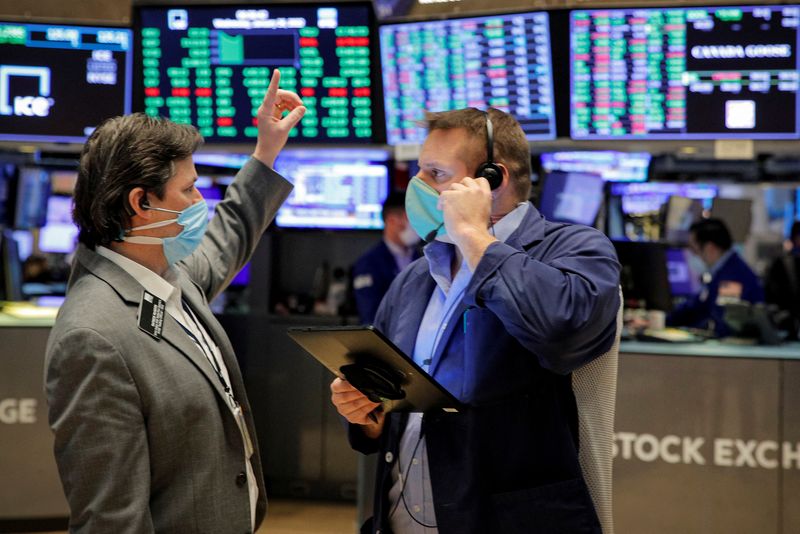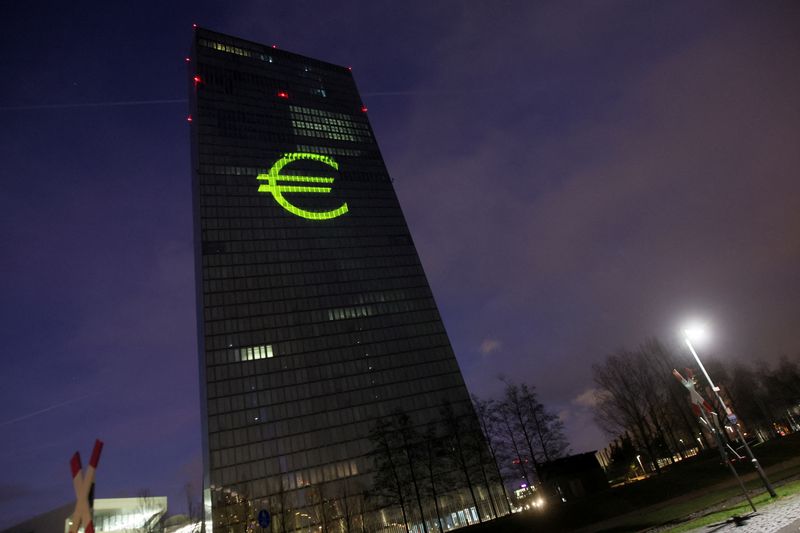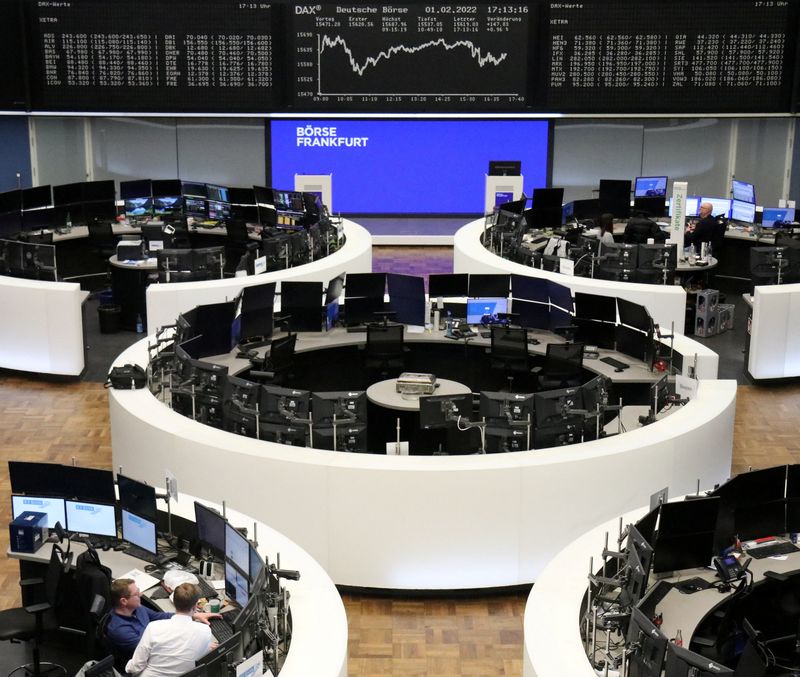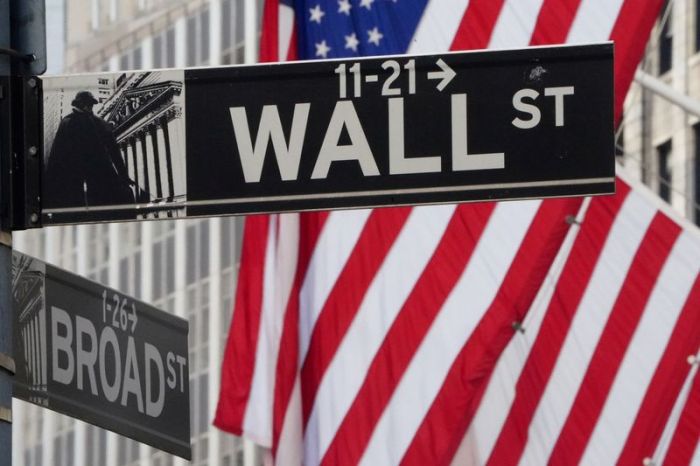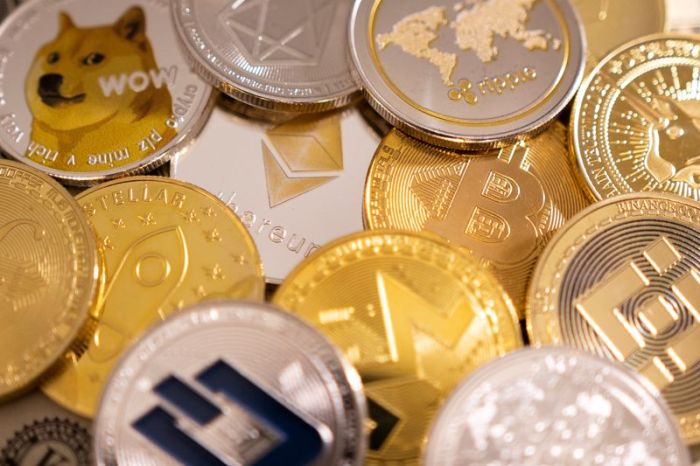WASHINGTON (Reuters) – Global equity markets slumped lower on Thursday while gold prices steadied and the dollar weakened as frightened investors digested disappointing updates from major central banks about the outlook for inflation and interest rates.
The European Central Bank and the Bank of England soured investor sentiment around inflation on Thursday, while a downbeat status update from the firm formerly known as Facebook further spooked traders.
Europe’s main bourses were down as the BoE delivered its widely expected second interest rate hike in three months, which helped buoy sterling and lift the euro.
The pan-European STOXX 600 index lost about 1.8% and MSCI’s gauge of stocks across the globe shed 1.2%, in response to a seemingly worldwide surge in inflation, analysts said.
On Wall Street, Facebook-owner Meta Platforms’ dour forecast sent its stock plummeting, abruptly ending a nascent recovery built on upbeat earnings from big tech companies.
In the currency market, the defensive mood dented the dollar after an earlier step to regain its footing. Inflation pressures were weighing on bonds as the ECB kept its policy unchanged as expected on Thursday.
Making only the smallest change to its statement, the ECB removed a clause stipulating that its next policy move could be in “either direction.”
The Dow Jones Industrial Average was down about 1.5%, the S&P 500 index shed more than 2% and the Nasdaq Composite dropped more than 3%.
“There’s a big impact from the results of Meta, it’s like a real earthquake,” said Mikael Jacoby, head of Continental European sales trading at Oddo Securities in Paris.
“We had good results here for European tech … I’m quite surprised by the resilience of the market here. I would say I’m not positive for markets moving forward: this is the last quarter when earnings will enjoy such a favorable comparison year-on-year, (interest) rates are going up and there’s a major geopolitical risk.”
(Graphic: Facebook hits the skids, https://fingfx.thomsonreuters.com/gfx/mkt/zjpqkaylwpx/Pasted%20image%201643890197966.png)
IG Markets analyst Kyle Rodda said there’s even more expected volatility in stocks to come, especially in terms of how far the Federal Reserve will go in tightening monetary policy this year.
“It doesn’t look like we are out of the woods yet. There’s been little resolution to the key Fed questions: How many hikes? What will the pace, size and timing of quantitative tightening be? Until that becomes clearer, volatility should remain heightened.”
U.S. DATA
Earlier on Thursday, the U.S. government reported that new claims for unemployment benefits fell more than expected last week as COVID-19 infections subsided, suggesting an anticipated slowdown in job growth in January was likely temporary.
U.S. job openings, however, are near historically high levels as companies seek to rebuild staff or pivot in response to changes in consumer demand, and there aren’t enough workers to fill all the positions, a reshuffling in the labor market which has seen more workers quit at near record levels.
In emerging markets, pressure was building on Turkey’s lira again after annual inflation there came in at nearly 50% in January. Russia’s rouble also dropped as tensions over Ukraine were fanned by the movement of 3,000 U.S. troops to Eastern Europe.
The dollar index fell 0.779%, with the euro up 1.25% to $1.1444.
The yield on 10-year Treasury notes was up 6.3 basis points to 1.829%. The two-year U.S. Treasury yield, which typically moves in step with interest rate expectations, was up 4 basis points to 1.196%.
Oil prices edged higher, maintaining their upward trajectory built on expectations that supply will tighten further even after OPEC+ producers stuck to planned moderate output increases.[O/R]
U.S. crude was up 2.2% to $90.20 per barrel on the day while Brent gained 1.73% to $91.02 per barrel.
Analysts have looked to U.S. oil output as a salve, though overall production was at 11.5 million bpd in the most recent week, according to federal data. ConocoPhillips Chief Executive Officer Ryan Lance said on Thursday that he now expects more production growth in the United States this year than he did a few weeks ago.
(Graphic: Currency markets in 2020, https://fingfx.thomsonreuters.com/gfx/mkt/myvmnjkeypr/Pasted%20image%201643811970966.png)
(Additional reporting by Julie Ponthus, Marc Jones and Ahmad Ghaddar in London; Editing by Ed Osmond, John Stonestreet, Mark Heinrich and Paul Simao)

